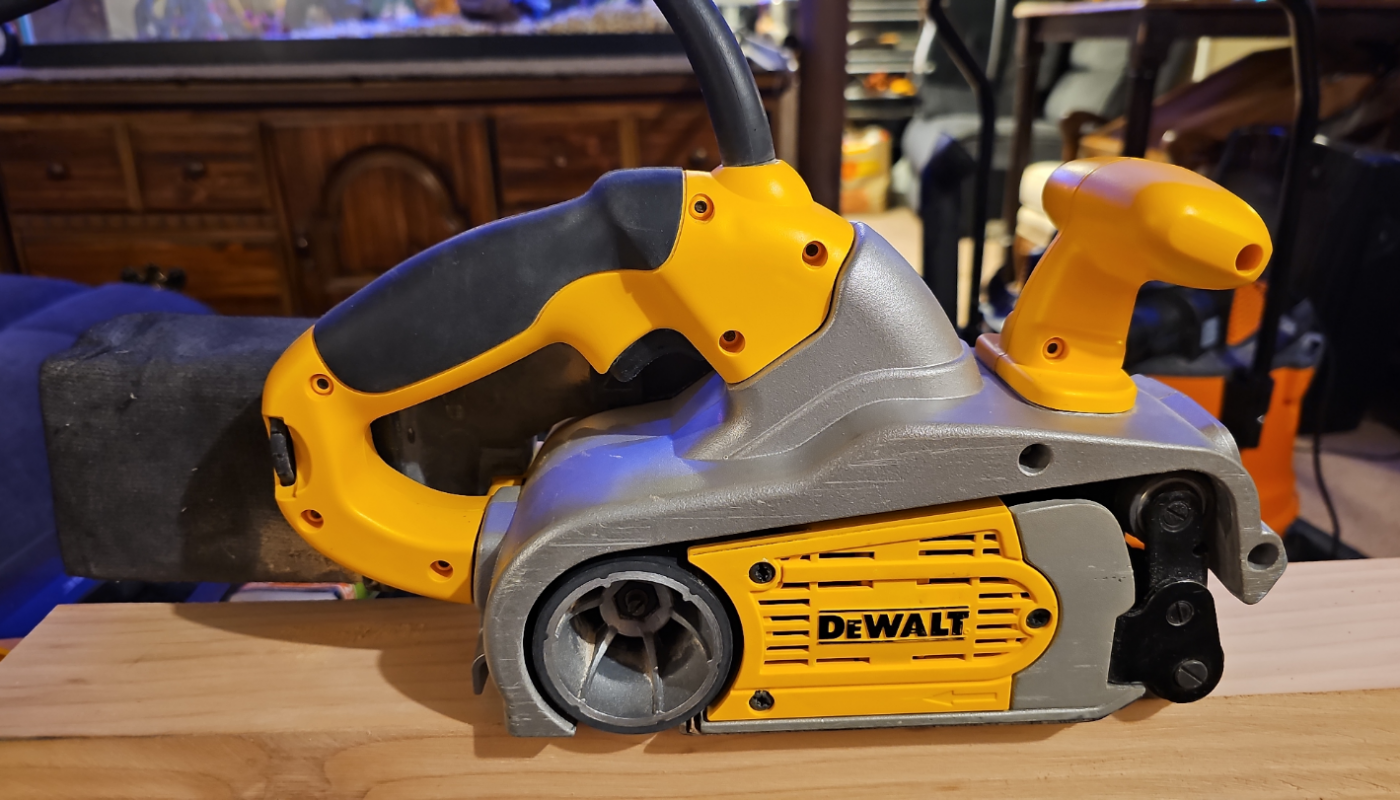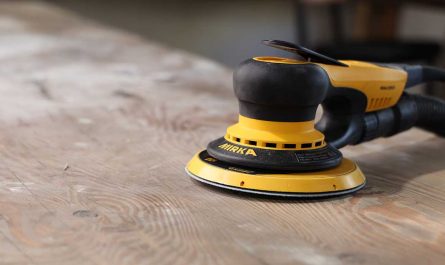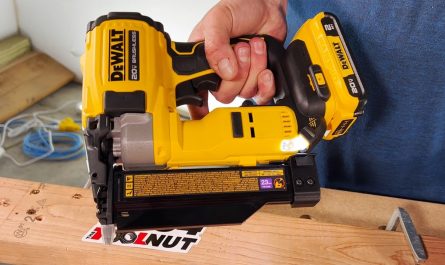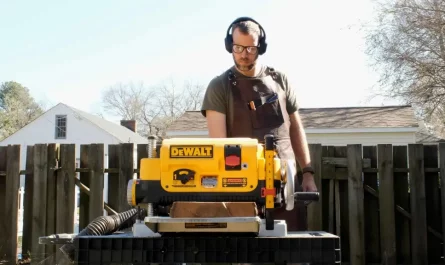In the world of woodworking and construction, finishing is just as vital as framing or cutting. That’s where the belt sander comes in—a high-powered tool designed for fast, aggressive material removal and surface leveling. Whether you’re evening out a hardwood floor, removing old paint, or shaping a beam, the belt sander combines speed and force to deliver clean, uniform results.
This article explores the history, types, specifications, and practical uses of belt sanders in carpentry and renovation. From rough stock prep to detailed refinishing, using a belt sander properly can transform a project from coarse to clean in seconds.
History and Evolution of the Belt Sander
Belt sanders evolved from manual sanding blocks and early drum sanders, developed to speed up surface preparation in large-scale carpentry and furniture work. As electric motors became lighter and more powerful, portable belt sanders were introduced in the mid-20th century, offering craftsmen the ability to smooth wide surfaces quickly and consistently.
Today’s models feature dust collection systems, variable speed controls, and ergonomic grips, making them safer and more comfortable to use. They are available in both handheld and stationary formats, designed for everything from beam sanding to floor refinishing and detailed shaping work.
Types of Belt Sanders and Their Applications
1. Handheld Belt Sander

Description and Use:
Handheld belt sanders are robust and efficient tools designed for aggressive material removal, making them ideal for surface leveling, paint stripping, and rough shaping of wood. They use a continuous loop of sandpaper that moves at high speed over two rotating drums, delivering powerful abrasion across large, flat surfaces. This makes them perfect for flattening wide boards, trimming door edges, or smoothing uneven panels quickly and effectively.
These sanders are especially popular in remodeling, cabinetry, and site preparation work where speed and surface correction are priorities. Handheld belt sanders excel when used on horizontal or flat surfaces, such as tabletops or subfloors, and are typically the go-to tool for the initial stages of sanding. Their ability to remove stock quickly saves time and effort compared to finer, less aggressive sanders.
While they are not intended for delicate work or final finishing, belt sanders are an essential first step in a multi-stage sanding process. Many models come with variable speed controls, dust collection ports, and ergonomic handles to improve user control and reduce fatigue. For any task requiring fast, even sanding over a broad area, a handheld belt sander is a powerful and reliable choice.
Technical Characteristics:
- Motor Power: 600 – 1,200 watts
- Belt Size: 75 x 457 mm or 100 x 610 mm (varies by model)
- Speed: 250 – 400 m/min
- Features: Dust bag or vacuum port, adjustable tracking, variable speed (in higher-end models)
- Weight: 3 – 6 kg
Price Range:
€80 – €300
2. Stationary (Benchtop) Belt Sander

Description and Use:
Stationary belt sanders are mounted tools commonly found in workshops, often paired with a disc sander for added versatility. These machines are designed for more precise, controlled sanding, making them ideal for shaping smaller pieces, sanding end grain, or fine-tuning miters and joints. The stationary setup offers greater stability compared to handheld models, which translates into improved control and more accurate results for detailed work.
These sanders are particularly valued for their consistency and precision, which is why they are extensively used in professional workshops for detailed finishing tasks. Whether you’re refining intricate joinery, smoothing the edges of smaller workpieces, or working with delicate materials, the stationary belt sander excels at providing a smooth, uniform finish.
Additionally, stationary belt sanders can be paired with sanding tables or jigs, allowing for the shaping of curves and other complex profiles with ease. This makes them a go-to tool for woodworkers who require high levels of accuracy and repeatability in their sanding tasks. Overall, stationary belt sanders are indispensable for workshop environments where precision, consistency, and versatility are essential for completing high-quality projects.
Technical Characteristics:
- Motor Power: 350 – 750 watts
- Belt Size: Typically 100 x 915 mm
- Speed: 200 – 300 m/min
- Integrated sanding disc (125–200 mm diameter)
- Dust port and adjustable work table
Price Range:
€100 – €400
3. Floor Belt Sander

Description and Use:
Floor belt sanders are heavy-duty, industrial-grade machines specifically designed for sanding and refinishing hardwood floors. These walk-behind units are ideal for removing old finishes, leveling uneven boards, and prepping large surfaces for new coatings, making them a vital tool in floor restoration or installation projects. The high-powered, continuous sanding action helps restore the smoothness and appearance of worn or damaged floors efficiently.
Due to their size and robust capabilities, floor sanders are typically used by professionals or those renting equipment for flooring projects. Their ability to cover large areas quickly is a significant advantage in floor refinishing, reducing the time and effort needed to sand extensive surfaces. However, due to their power and weight, they require skillful operation to avoid issues like gouging the wood or creating uneven sanding patterns.
Floor sanders are most effective when paired with additional tools for detail work, such as edge sanders for tight corners and along baseboards. For anyone involved in flooring installations, restorations, or refinishing, floor belt sanders are an indispensable tool for achieving a smooth, even surface in minimal time, though they demand care and experience to use properly.
Technical Characteristics:
- Motor Power: 1,500 – 3,000 watts
- Belt Width: 200 – 300 mm
- Sanding Speed: High torque, variable belt speeds
- Integrated dust collection
- Often belt-driven with drum systems
Price Range:
€500 – €3,000+ (often rented instead of bought)
Common Applications in Carpentry and Construction
- Surface Leveling: Smooth rough lumber or uneven joints in panels, doors, or floors.
- Paint & Finish Removal: Strip old paint, varnish, or glue from surfaces.
- Edge Beveling: Create subtle chamfers or roundovers before finishing.
- Floor Sanding: Refinish hardwood floors prior to staining or sealing.
- Beam & Timber Shaping: Refine large wood elements during framing or renovation.
- Material Prep: Smooth down high spots or milling marks before assembly or finish.
Conclusion
The belt sander is a powerhouse in the finishing arsenal of any woodworker or contractor. Capable of transforming rough materials into smooth, ready-to-finish surfaces, it offers unmatched efficiency for large-area sanding and surface prep.
Choosing the right model depends on your needs—handheld for flexibility, stationary for detail work, or floor models for large-scale resurfacing. With proper grit selection, pressure control, and dust management, the belt sander becomes an invaluable tool in both rough carpentry and fine woodworking projects.



